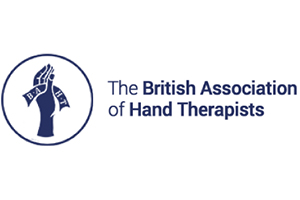TERMINAL FINGER JOINT ARTHRITIS
Download as Information Leaflet
What is it?
The terminal joint of the finger is called the distal interphalangeal joint (DIPJ) (see diagram). Osteoarthritis often affects these joints, and can also affect the joint at the base of the thumb (Basal thumb arthritis). Osteoarthritis is loss of the smooth cartilage surface covering the ends of the bones in the joints. The cartilage becomes thin and rough, and the bone ends can rub together. Osteoarthritis can develop at any age, but usually appears after the age of 45. It may run in families.
What are the symptoms?
• Pain
• Swelling
• Deformity
• Stiffness
• Loss of function
Many peoples notice small bony bumps on the back of the joint. These are osteophytes, which are bony swellings associated with an osteoarthritic joint. In the hand they are called Heberden’s Nodes.
Many people with osteoarthritis of these joints have very little pain. Even though the joints may become lumpy and bent, the hands usually continue to work quite well.
What is the treatment?
Episodes of pain, redness and swelling frequently settle spontaneously over some weeks or months, and can be managed by avoiding painful activities (if possible), simple painkillers, anti-inflammatory gels or anti-inflammatory medication. Steroid injections are sometimes given.
Surgery can be used to fuse (stiffen permanently) a joint that is persistently painful, but the potential benefit needs to be balanced against the loss of movement. The joint is usually fused in a straight or slightly bent position.
There are various surgical techniques used to obtain fusion and your surgeon will explain the technique he or she plans to use for you. After the surgery you may need to wear a splint to support and protect the joint for several weeks.
ARTHRITIS AT THE BASE OF THE THUMB
The universal joint at the base of the thumb, between the metacarpal and trapezium bones, often becomes arthritic as people get older. It is osteoarthritis, which is loss of the smooth cartilage surface covering the ends of the bones in the joints. The cartilage becomes thin and rough, and the bone ends can rub together.
Osteoarthritis can develop at any age, but usually appears after the age of 45. It may run in families, and it sometimes follows a fracture involving the joint many years before.
Arthritis of the basal joint of the thumb is common in women and rather less common in men. X-rays show it is present in about 25% of women over the age of 55, but many people with arthritis of this joint have no significant pain.
What are the symptoms?
1. Pain at the base of the thumb, aggravated by thumb use.
2. Tenderness if you press on the base of the thumb.
3. Difficulty with tasks such as opening jars, turning a key in the lock etc.
4. Stiffness of the thumb and some loss of ability to open the thumb away from the hand.
5. In advanced cases, there is a bump at the base of the thumb and the middle thumb joint may hyperextend, giving a zigzag appearance.
What is the treatment?
The options for treatment include:
1. Avoiding activities that cause pain, if possible.
2. Analgesic and/or anti-inflammatory medication. A pharmacist or your family doctor can advise.
3. Using a splint to support the thumb and wrist. Rigid splints (metal or plastic) are effective but make thumb use difficult. A flexible neoprene rubber support is more practicable.
4. Steroid injection improves pain in many cases, though the effect may wear off over time. The risks of injection are small, but it very occasionally causes some thinning or colour change in the skin at the site of injection. Improvement may occur within a few days of injection, but often takes several weeks to be effective. The injection can be repeated if needed.
5. Surgery is a last resort, as the symptoms often stabilise over the long term and can be controlled by the non-surgical treatments above. There are various operations that can be performed to treat this condition. These are listed below:
a. Osteotomy, which means cutting and realigning the metacarpal bone next to the arthritic joint.
b. Removal of the trapezium which is removal of the bone at the bottom of the thumb, which forms one surface of the arthritic joint, sometimes combined with reconstruction of the ligaments.
c. Fusion of the joint, so that it no longer moves.
d. Joint replacement, as in a hip replacement.
e. Denervation, which means cutting small nerve branches that transmit pain from the arthritic joint. Removal of the trapezium is the most commonly performed operation. Ms Moon will advise you on the best options for your thumb.







